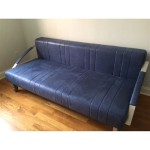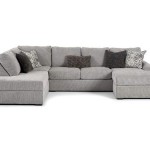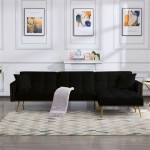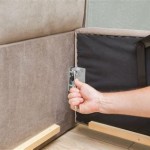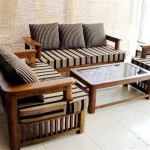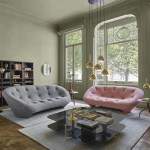The Enduring Appeal of Traditional Curved Sectional Sofas
Traditional curved sectional sofas represent a significant design choice in interior decorating, embodying a blend of classic aesthetics and contemporary functionality. Unlike linear sectional sofas, the curved design offers a unique visual appeal, fostering a sense of intimacy and promoting conversation within a living space. Understanding the various aspects of these sofas, from their design elements to their practical considerations, is crucial for making an informed purchase and integrating them successfully into a home.
The history of curved furniture can be traced back to various periods, with influences from classical architecture and design movements like Art Deco. The curved lines often evoke a sense of elegance and sophistication reminiscent of historical furniture pieces. This inherent connection to established design principles makes traditional curved sectionals a timeless choice for many homeowners. Modern interpretations build upon these historical foundations while adapting the design to accommodate contemporary lifestyles and spatial requirements.
The popularity of curved sectional sofas has seen resurgence, fueled by a desire for comfortable yet stylish living environments. They represent a departure from the rigid lines often associated with modern furniture, offering a softer, more inviting aesthetic. This shift in preference is also driven by the increasing recognition of the positive impact of curved shapes on spatial perception and emotional well-being.
Key Design Elements of Traditional Curved Sectional Sofas
Traditional curved sectional sofas are characterized by several key design elements that distinguish them from their linear counterparts. These elements contribute to the overall aesthetic appeal and influence the functionality of the sofa within a room.
One of the defining features is, of course, the curvature itself. The arc can range from a gentle curve to a more pronounced crescent shape. The degree of curvature impacts the seating arrangement and the overall flow of the room. A gentle curve may be suitable for smaller spaces, while a more dramatic curve can become a focal point in a larger living area. The curvature often extends throughout the various modular pieces of the sectional, creating a cohesive and visually harmonious design.
Upholstery plays a crucial role in defining the style of a traditional curved sectional. Classic fabrics like velvet, linen, and leather are frequently used to enhance the sofa's elegance. Tufting, whether button-tufting or channel-tufting, is another common element that adds depth and texture to the upholstery. The color palette often leans toward neutral tones or rich jewel tones, reflecting a sense of sophistication. Patterns, if incorporated, are typically understated and classic, such as subtle damask or geometric designs.
The frame construction of a traditional curved sectional is essential for durability and longevity. High-quality hardwoods, such as oak or birch, are often used to provide a sturdy foundation. The frame's design must be capable of supporting the curved shape and accommodating the weight of multiple users. Furthermore, the suspension system, whether it involves sinuous springs or webbing, contributes significantly to the sofa's comfort and support.
Legs and base details contribute to the overall aesthetic of the sofa. Traditional designs often feature turned legs, tapered legs, or elegantly skirted bases. The materials used for the legs may include wood, metal, or a combination of both. The height and style of the legs can significantly impact the sofa's overall profile and its compatibility with the room's decor.
Practical Considerations When Choosing a Curved Sectional
Beyond the aesthetic appeal, several practical considerations must be taken into account when selecting a traditional curved sectional sofa. These factors relate to the size and layout of the room, the intended use of the sofa, and the overall lifestyle of the household.
The size and layout of the room are perhaps the most critical considerations. Curved sectional sofas are typically larger than standard sofas and require ample space to accommodate their shape. It is essential to measure the room accurately and consider the traffic flow around the sofa. A curved sectional can effectively define a seating area in an open-plan space, but it can also overwhelm a smaller room if not chosen carefully. Consider the placement of other furniture pieces, such as coffee tables, end tables, and entertainment units, to ensure a balanced and functional arrangement.
The intended use of the sofa is another important factor. If the sofa is primarily intended for lounging and relaxation, comfort should be a top priority. Look for sofas with deep seats, plush cushions, and supportive backrests. If the sofa is also intended for formal entertaining, the style and elegance of the design may be more important. Consider the number of people who will typically use the sofa and choose a size that comfortably accommodates them. The fabric choice should also reflect the intended use, with durable and stain-resistant materials being suitable for high-traffic areas and households with children or pets.
The modularity of the sectional is a key aspect to consider. Many curved sectionals are composed of multiple modular pieces that can be arranged in various configurations. This flexibility allows homeowners to adapt the sofa to changing needs and spatial requirements. Some modular sectionals even include features such as built-in storage, reclining seats, or sleeper functions. When selecting a modular sectional, it is essential to ensure that the individual pieces are securely connected and that the overall design maintains its integrity when reconfigured.
Durability and maintenance are crucial considerations for any furniture purchase. Traditional curved sectional sofas represent an investment, and it is important to choose a sofa that will withstand the test of time. Look for sofas with high-quality construction, durable fabrics, and robust support systems. Regular maintenance, such as vacuuming and spot cleaning, can help to prolong the sofa's lifespan. Professional cleaning may be required periodically to remove stains and maintain the upholstery's appearance.
Integrating a Curved Sectional into a Traditional Decor Style
Successfully integrating a traditional curved sectional sofa into an existing decor style requires careful attention to detail and a cohesive design approach. The sofa should complement the room's overall aesthetic and enhance its visual appeal.
Color harmony is essential when incorporating a curved sectional into a traditional decor. The sofa's upholstery should coordinate with the existing color palette of the room. Neutral tones, such as beige, cream, and gray, are versatile choices that can blend seamlessly with various decor styles. Rich jewel tones, such as emerald green, sapphire blue, and ruby red, can add a touch of elegance and drama. When selecting a color, consider the existing wall colors, flooring, and accent pieces to ensure a harmonious and balanced look. A color wheel can be a helpful tool for identifying complementary or analogous color schemes.
Incorporating complementary furniture pieces can enhance the overall design. Choose coffee tables, end tables, and accent chairs that complement the style and shape of the curved sectional. Round or oval-shaped coffee tables can echo the sofa's curves, while rectangular end tables can provide a contrasting element. Accent chairs with curved backs or ornate details can further enhance the traditional aesthetic. Consider the height and scale of the furniture pieces to ensure a balanced and proportionate arrangement.
Accessories and textiles play a crucial role in completing the look. Throw pillows, blankets, and rugs can add texture, color, and visual interest to the seating area. Choose throw pillows with classic patterns, such as damask, floral prints, or geometric designs. Soft and luxurious fabrics, such as velvet, silk, or cashmere, can enhance the sofa's comfort and elegance. An area rug can help to define the seating area and anchor the furniture pieces together. Consider the size, color, and pattern of the rug to complement the overall decor.
Lighting plays a vital role in creating the desired ambiance. Traditional decor often incorporates soft, warm lighting to create a cozy and inviting atmosphere. Use a combination of ambient lighting, task lighting, and accent lighting to illuminate the room. Table lamps with elegant shades can provide task lighting for reading or writing. Wall sconces can add accent lighting and highlight architectural features. A chandelier or pendant light can serve as a focal point and provide ambient lighting for the entire room. The choice of light bulbs can also impact the overall mood, with warm-toned bulbs creating a more inviting and relaxing atmosphere.

25 Curved Sectional Sofas Find A Couch For Your Family

25 Curved Sectional Sofas Find A Couch For Your Family

Curved Two Piece Sofa Sectional With Chainette Fringe

Hayward Large Curved Sectional Stickley Furniture Mattress

Design Classic Curved Sectional Sofa Property Furniture

Selene Custom Fringe Sofa Sectional With Com Upholstery

Nailhead Trim Sectional Sofas The Home Depot

6740155 Ashley Furniture Laf Loveseat Sectional

How To Find The Perfect Place For Your Curved Sofa Or Sectional

25 Curved Sectional Sofas Find A Couch For Your Family

